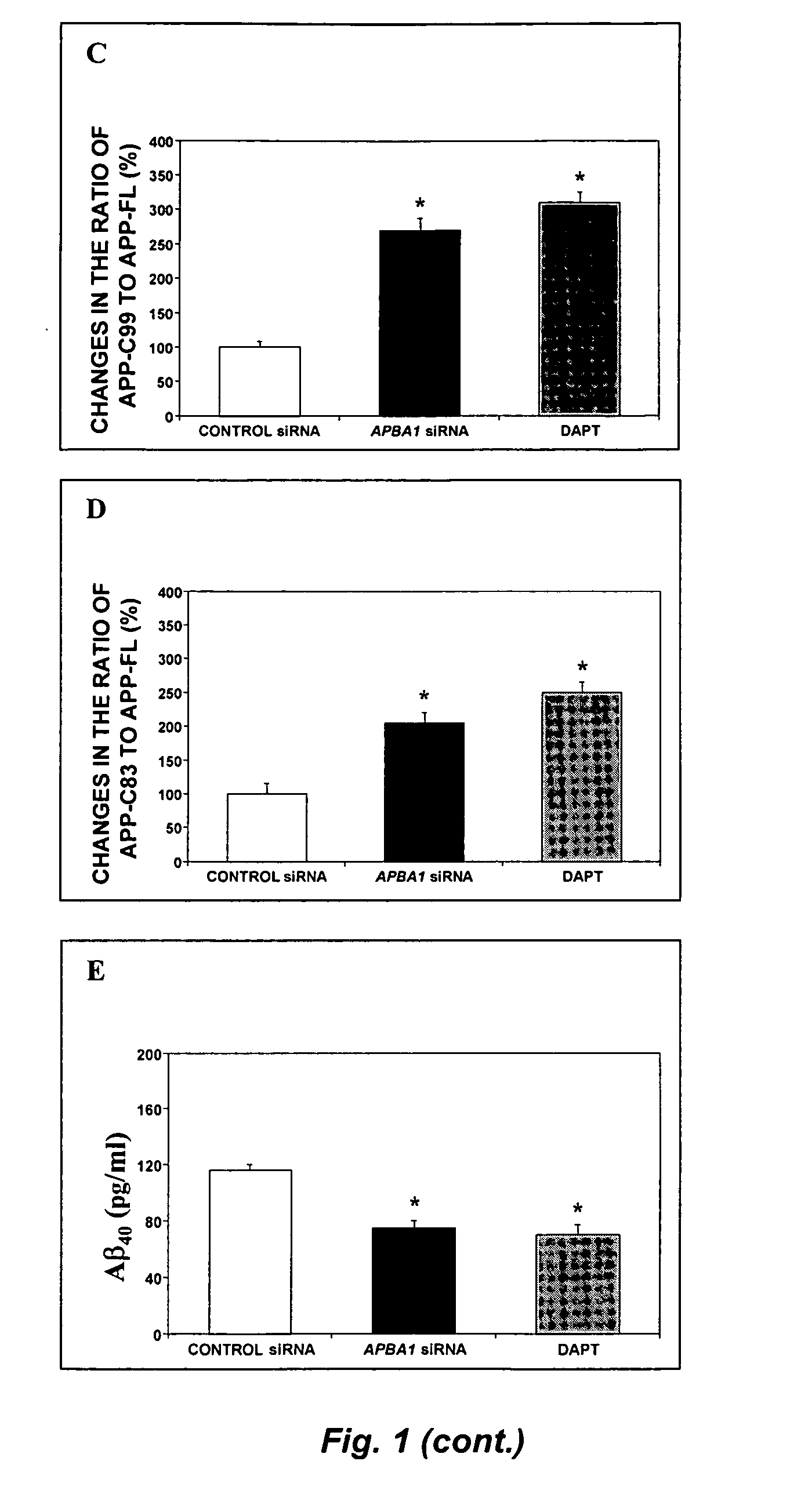Methods for reducing amyloid beta levels
- Summary
- Abstract
- Description
- Claims
- Application Information
AI Technical Summary
Benefits of technology
Problems solved by technology
Method used
Image
Examples
examples
Experimental Procedures
Cell Lines
[0126] We employed naïve H4 human neuroglioma (H4) cells and H4 cells stably-transfected to express either the APP-FL, or APP-C99. Peptide APP-C99 is the product of β-secretase, which, therefore, contains α- and γ-, but not β-cleavage sites. This cell line provides a valid system to assess whether any effects on APP processing is dependent on γ-secretase-mediated APP processing and independent of β-secretase-mediated APP processing. All cell lines were cultured in DMEM (high glucose) containing 9% heat-inactivated fetal calf serum, 100 units / ml penicillin, 100 μg / ml streptomycin, and 2 mM L-glutamine. Stably transfected H4 cells were additionally supplemented with 200 μg / ml G418.
RNAi and DAPT Treatment
[0127] Small interfering RNA (siRNA) duplexes were designed and obtained from Dharmacon Research, Inc. (Lafayette, CO 80026) against human APBA1, the gene encoding X11α (5′-GGATGCTCAGCTGATTGCA-3′; SEQ ID NO:2), APBA2, the gene encoding X11β (5′-G...
PUM
| Property | Measurement | Unit |
|---|---|---|
| Level | aaaaa | aaaaa |
| Degradation properties | aaaaa | aaaaa |
Abstract
Description
Claims
Application Information
 Login to View More
Login to View More - R&D
- Intellectual Property
- Life Sciences
- Materials
- Tech Scout
- Unparalleled Data Quality
- Higher Quality Content
- 60% Fewer Hallucinations
Browse by: Latest US Patents, China's latest patents, Technical Efficacy Thesaurus, Application Domain, Technology Topic, Popular Technical Reports.
© 2025 PatSnap. All rights reserved.Legal|Privacy policy|Modern Slavery Act Transparency Statement|Sitemap|About US| Contact US: help@patsnap.com



